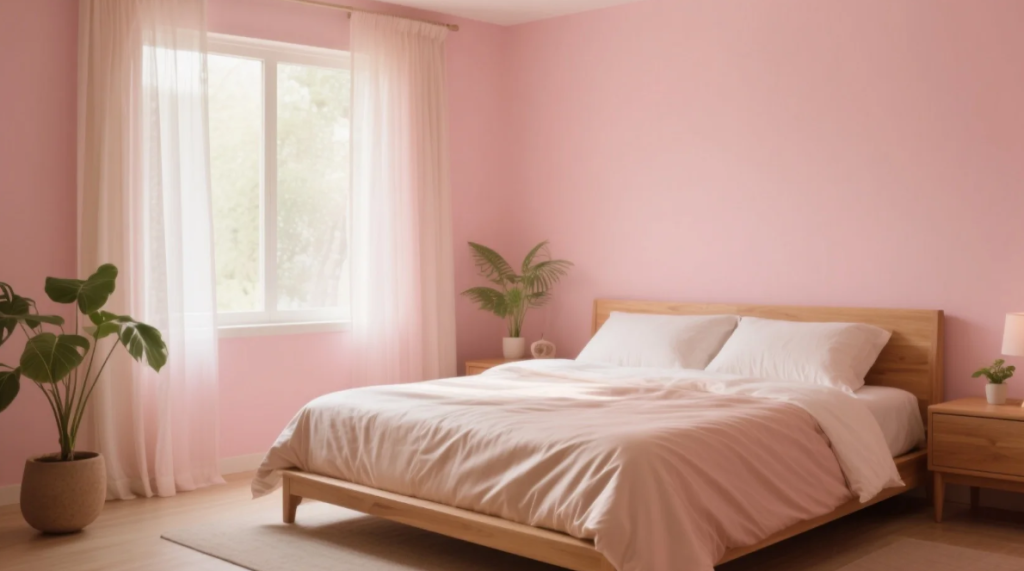What Is the Best Color for Your Bedroom According to Feng Shui?
Have you ever walked into a room and immediately felt calm—or tense? That feeling often comes from the colors around you. In Feng Shui, color isn’t just decoration. It’s energy. So what does that mean for your bedroom?

The bedroom is your place of rest. It’s where you recharge. Choosing the wrong color could unknowingly block peaceful energy. On the other hand, picking the right shades—yes, the right farbe im schlafzimmer feng shui—can enhance your sleep, mood, and even relationships.
How Does Feng Shui View Color in Bedroom Spaces?
Feng Shui ties every color to a specific element and type of energy. For example, blue connects to water and calm, while red symbolizes fire and passion. These aren’t just design ideas—they represent energetic forces that influence how you feel.
Let’s take the Earth element. Colors like beige, terracotta, or light yellow support stability and grounding. That’s exactly what many people need after a long, stressful day. But choosing overly bright or dark tones might disrupt this balance.
Farbe im schlafzimmer feng shui isn’t about trend—it’s about harmony. When energy flows smoothly, your body and mind follow.
Which Feng Shui Colors Promote Better Sleep?
Not all peaceful colors are the same. Some calm you, but others might make you feel too passive. So which colors really work for your bedroom?
- Light Blue: Encourages serenity and emotional peace.
- Soft Green: Balances emotions and brings growth energy.
- Cream or Beige: Offers warmth without overwhelming.
- Muted Lavender: Soothes the mind and promotes relaxation.
Now, imagine combining light blue walls with wooden furniture and soft beige sheets. It’s not just cozy—it’s energetically balanced. This is what farbe im schlafzimmer feng shui is all about.
Interestingly, while black is considered elegant, it may invite too much yin energy in a bedroom. Use it carefully, perhaps as an accent only.
Mistakes People Make When Choosing Bedroom Colors
Color is personal. But when it comes to Feng Shui, personal taste should align with energy flow. So what common mistakes should you avoid?
- Using too much red or orange: These are fire colors. They stimulate passion—but overuse can cause restlessness.
- Pure white rooms: Although clean, they may feel cold or isolating without earthy elements.
- Mixing too many strong colors: It confuses the eye and disrupts flow.
A couple once painted their bedroom deep red for romance. But they soon noticed trouble sleeping and more arguments. When they switched to muted earth tones, their sleep and communication improved. A classic case of color energy imbalance.
How to Apply Farbe im Schlafzimmer Feng Shui in Real Life
You don’t need to repaint your whole room to benefit. Sometimes, small changes make a big difference.
- Start with bedding: Choose soft green or cream tones.
- Use curtains and rugs: Add gentle textures in calming colors.
- Wall art: Select soothing images with soft blues or nature scenes.
One example: Lisa, a graphic designer in Berlin, swapped her bold purple walls for a dusty rose tone. She also added a jade-green throw blanket and a wooden bedside lamp. Her anxiety at night? Gone in two weeks. That’s the power of thoughtful color shifts.
What If You and Your Partner Prefer Different Colors?
Here’s a tricky one—what if your favorite farbe im schlafzimmer feng shui isn’t theirs?
This is more common than you think. One partner may feel drawn to cool blues, while the other likes warm yellows. So how do you strike a balance?
Use compromise zones. For instance:
- Main walls in neutral beige
- Accent pillows in both blue and yellow
- Shared art that includes both tones
This way, both energies are represented. Feng Shui respects balance, not dominance.
Can Colors Really Impact Health and Relationships?
It may sound surprising, but yes. In Feng Shui, the bedroom represents not just rest—but connection, intimacy, and inner peace. The wrong color can subtly increase tension, while the right palette can soften emotions.
A couple in Munich repainted their bedroom after a Feng Shui consultation. They moved from grey and black to ivory and forest green. Within months, both reported deeper sleep and fewer arguments.
So while color isn’t a magic fix, it’s often the hidden factor we overlook.
Final Thoughts: Trust the Feeling, Then Check the Flow
Sometimes, you instinctively know when a room feels “off.” That’s where farbe im schlafzimmer feng shui becomes both an art and a tool. By understanding how colors interact with energy, you take control of your space—and your emotional well-being.
Want a quick tip? After choosing your colors, spend one full evening in the room without electronics. Just observe how you feel. Are you calmer? Or distracted? Your body knows.
